
There is a method of blogging that is called SEO Content Writing. Its goal is to write purely for achieving search engine rankings (mainly on Google). It, therefore, needs a different kind of planning, creation, and optimizing of content.
Writing for SEO also has its own tricks, tactics, and techniques. It takes a lot of training to become an SEO Content Writer, and to stay at the top of the trade, despite Google’s frequently changing algorithms.

After you see this portfolio sample below, click here to get back to the Portfolio Index page.
“SEO Blog Posts” can be pivotal drivers of organic website traffic, provided they are optimized for search engines. A well-optimized blog post must be strategically crafted around a specific, highly searched keyword (or topic).
It must then be written with the strategic aim of getting to the top spots on the search results pages of search engines for that keyword or topic and its related sub-topics.
How to structure the blog post and what sub-topics to cover will depend on comprehensive SERP (Search Engine Results Page) analysis.
By meticulously studying what topics and sub-topics competitors have covered, and then matching – and surpassing – the best content on SERPs, one can create blog posts that truly magnetize targeted free traffic.
The SEO Blog Post sample below demonstrates how it has been optimized for the primary keyword “small business marketing.” It has covered a lot of secondary keywords (related sub-topics) that competitive blog posts have – and also included many that competition has not thought to include.
For example: small business marketing basics, small business marketing tips, small business marketing budgets, small business marketing automation, small business marketing services, small business local marketing … you get the gist.
Also, the post has a graphic between every 300 words or so – another tactic to outrank competitive blog posts.
One thing to remember … while it’s important to do whatever it takes to get rankings on search engines, it’s also important to write for the target audience the blog post aims to help. Since this blog post is intended for a beginner audience of small businesses, its language and style have been appropriately tailored.
Read on …

You type “small business marketing” into Google, and what do you get? Loads of ideas, I bet. Articles may be competing with each other to offer 51 ideas, 101 ideas, 501 ideas.
They are all excellent ideas, no doubt. But the problem is they may all be ideas randomly gathered from across the whole landscape of marketing. Am I right?
Where do you begin when those 101 marketing ideas for small business include bits of email marketing, content marketing, strategy and planning, webinar marketing, videos, and podcasts, marketing practices – all served up as a pig’s breakfast?
Sometimes it’s an opposite problem. You’re given many ideas from just one or two facets of marketing, leaving several territories uncovered. You’re left with lopsided advice.
We understand. You want a clear progress roadmap with all the right ideas categorized and prioritized. You want actionable advice in steps because you’re a small business owner with no time or money for haphazard marketing. Right again?
Concept definitions must be both explanatory and also simple, don’t you agree?
That’s why you may like this marketing definition from C.J Hayden (the author of Get Clients Now!). Here’s what she says:
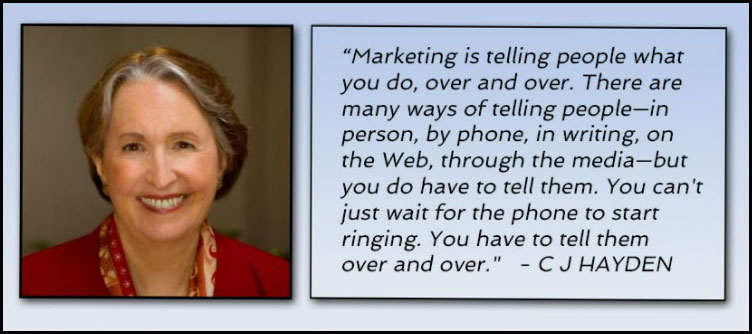
Here are some classic small business marketing tips where small businesses usually don’t pay as much attention as they must :
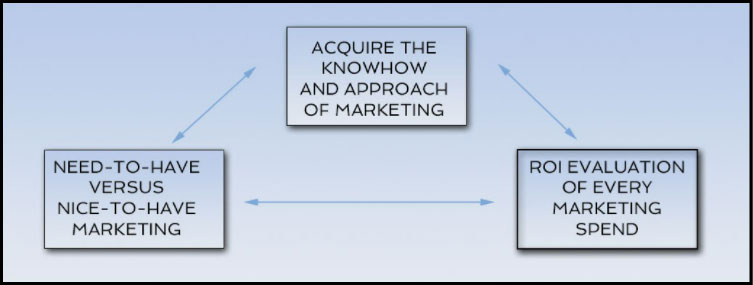
Can small businesses get free marketing? Not quite. But you can get close.
When the book “The $100 StartUp” came out, there was such a to-do about its low numbers for small business marketing budgets.
Well … there is one marketer whose business has been publishing on Medium for the last five years, and here’s what he does and spends to earn a princely sum of $5000 every month.
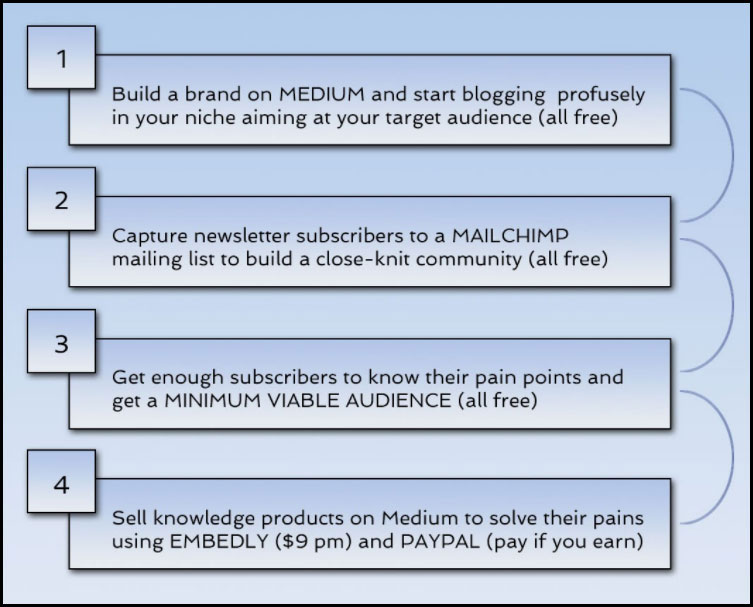
Small businesses marketing automation could use simple email. Here is a graphic that shows you the typical customer journey (when buying anything).
Set up separate automated sequences of emails to nudge customers at every stage of their journeys – to urge people to take the following steps while they’re still hot and responsive to your influence.
Prevent them from straying away midway.
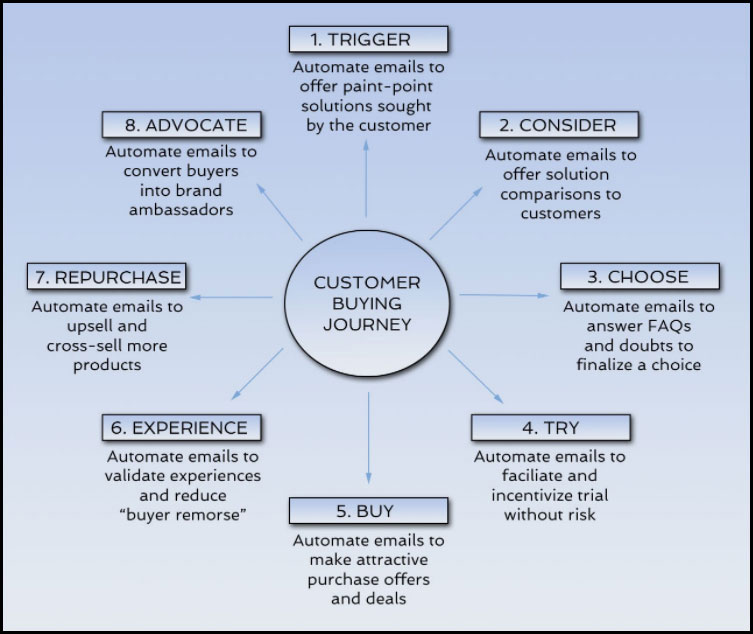
Apart from domain, web hosting, and website design services, most small businesses also need email list management services, tech services, SEO services, and other software and apps.
Should you want other small business marketing services, there is also a spectrum of options. Starting with free self-help, you can go all the way up to consultants offering done-for-you services. Small business marketing courses are a happy middle ground that balance expert guidance with self-paced learning.
When looking for small business marketing companies that specialize in businesses of your size. Ask to see their business and content marketing examples.
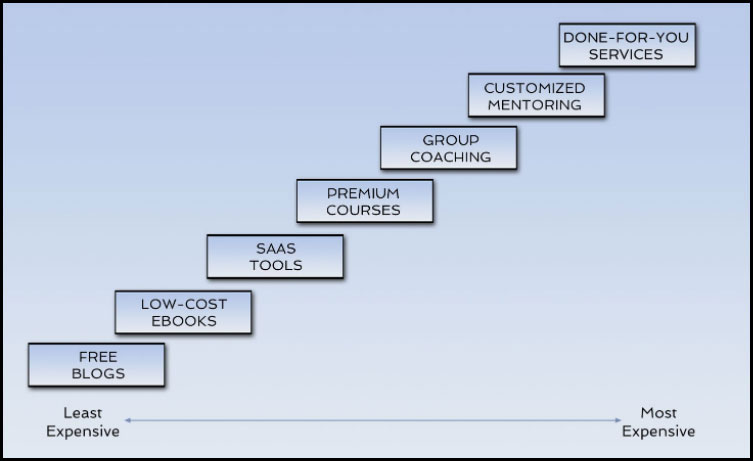
Small business local marketing is a form of “micro-marketing”. You deliberately pick a manageable geographical area around you – your suburb, maybe – and intensively market your business both physically and digitally.
The most intelligent way to become a visible player locally is by melding with the local community in many ways (as shown below). Look for ways in which your local audiences search for “small business marketing near me” so you can respond really quickly.
Remember, mobile marketing can be a heavy-hitter for you when you go local because it enables geo-specific targeting.
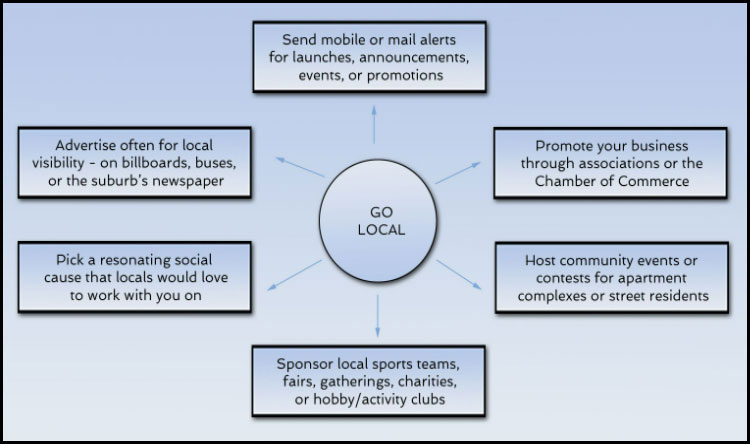
In aquariums, it’s common to see small fish biting off other small fish and the fins of the bigger ones, to make more room for their own growth. To achieve such menacing competitiveness, your small business marketing strategy must be sharp and defined.
It’s simple – you have to make six key decisions to get at your ideal small business marketing profile.
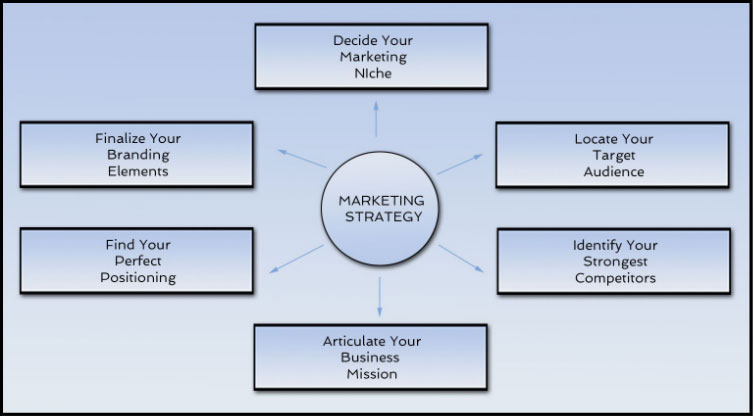
A small business marketing plan usually includes business strategy plus a few other specifics like numbers, schedules, deadlines, route maps, and actions to take:
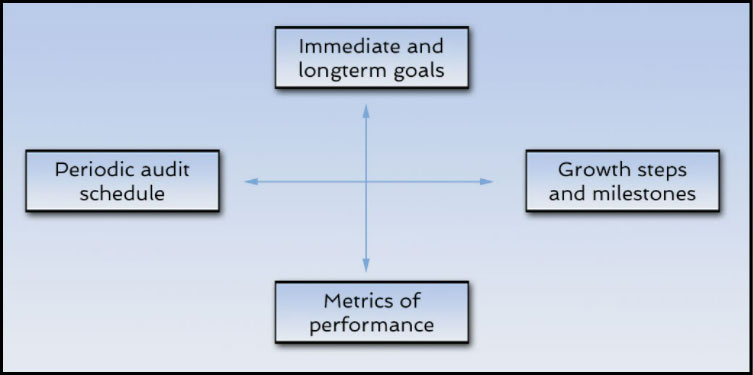
Which marketing is the best for small business? As the following diagram shows you, there are four big marketing pillars that every small business must use, willy nilly. Let’s look at the details.
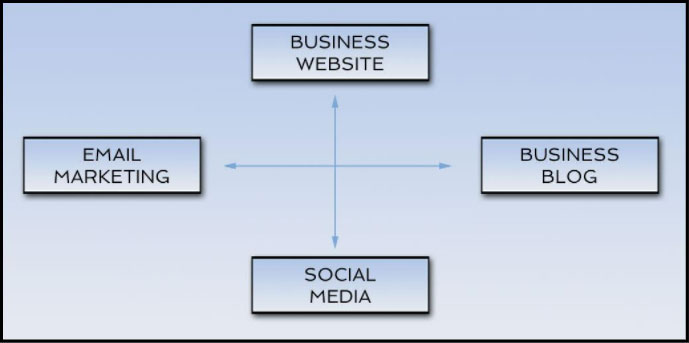
1. HOW YOUR SMALL BUSINESS WEBSITE MARKETING IS LIKE A STAGING GROUND …
Your website is the centerpiece of your marketing. It’s where you put in all the infrequently changing information about your business. Add your credentials, values, differentiation, products, selling and marketing practices, and policies … the works.
If your website is like a brochure of your business, your blog is like a magazine. It’s fresh from issue to issue – with something new to read at every visit. Blogs regularly to beckon traffic to your site with vigor.
It’s said that unless a person is touched at least between 7-12 times by your work, he doesn’t develop closeness, trust, and loyalty. To frequently whisper “wakey wakey” into sleeping ears is your email marketing’s goal.
Whenever your blog has something new, aim social posts at the “influencers” on social media. Influencers on Facebook, Twitter, Instagram, Pinterest, or LinkedIn will like and share it with their vast fan base. In other words, conquer the fort to capture the surrounding territory.
(More social ideas follow in the extra activities below.)
Once you put in place and optimally action the Big Four Marketing Activities, decide extra goals you want to achieve, for your small business marketing for 2021 and beyond. The graphic below radiates in all the directions you can go.
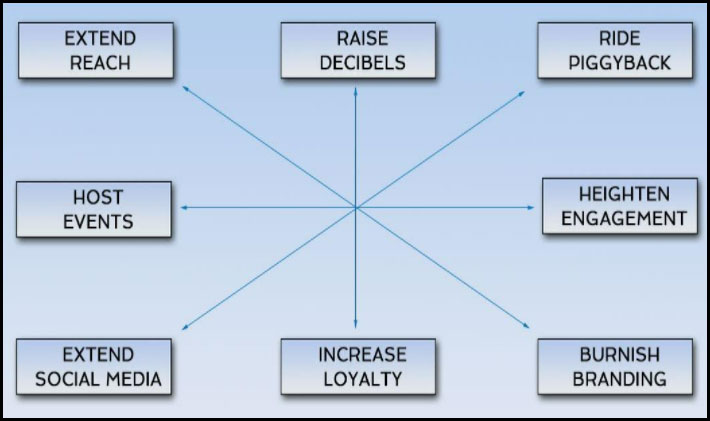
Being seen in more places and more content formats extends your business and brand reach, and widens your sphere. Here are some top ideas to achieve this:
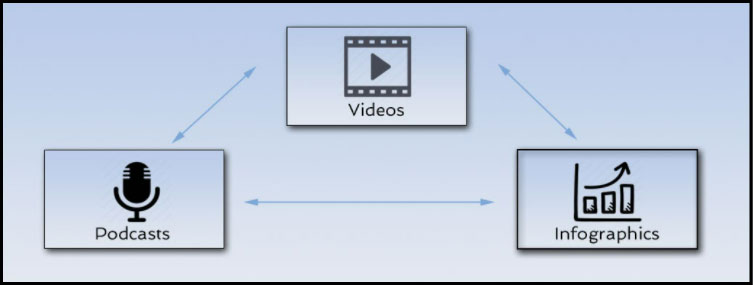
Raise your business roar by being heard from places online where you can vocalize your brand authority. Here are some best ideas to achieve this:
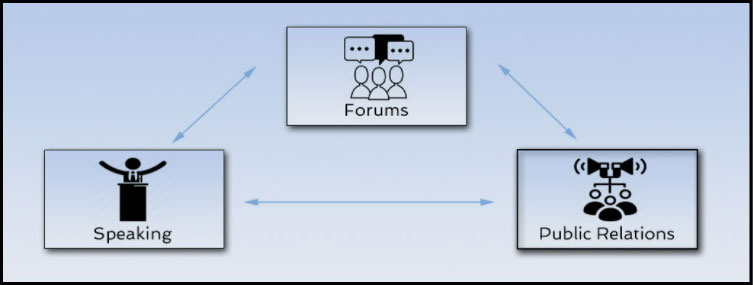
The shortest cut to your business growth is to hitch rides on the backs of other successful marketers. Here are some terrific ideas to achieve this:
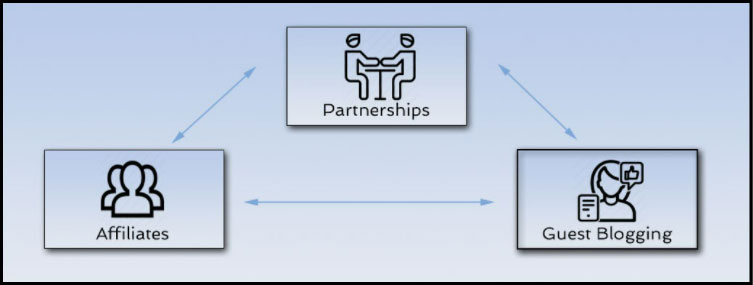
Helpfully engaging with your audiences, or embracing them into your fold, is a great way to build trust and sales. Here are some smart ideas to achieve this:
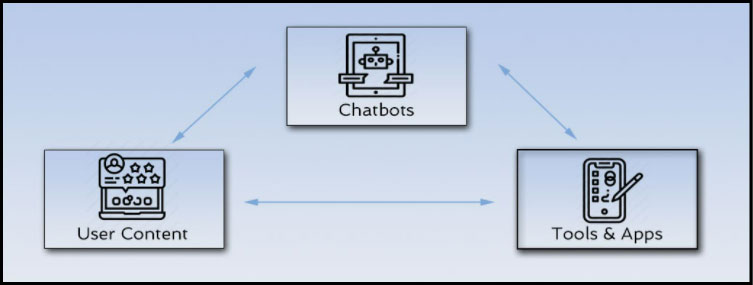
Want your brand to become a “highly visible expert” and be reckoned as a “thought-leader”? Here are some clever ideas to achieve this:
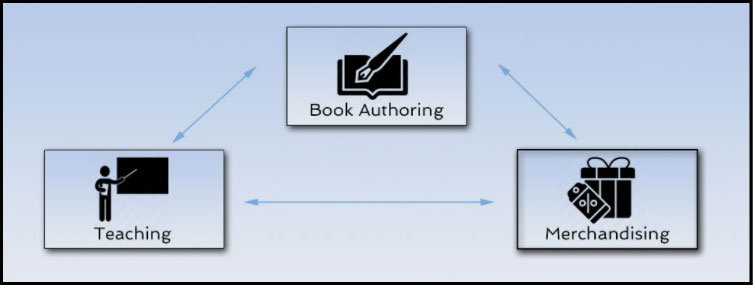
Fostering a closely-knit community around your business is the most thoughtful way to keep your customers from looking for greener pastures. Here are some brilliant ideas to achieve this:
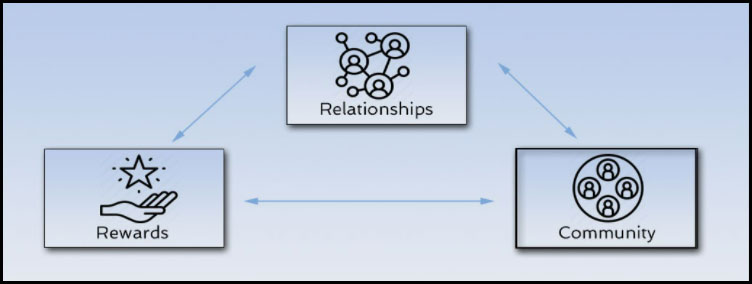
Advertising, in short-burst campaigns, can be a great tactic to heighten brand awareness when your business needs more eyeballs. Here are some excellent ideas to achieve this:
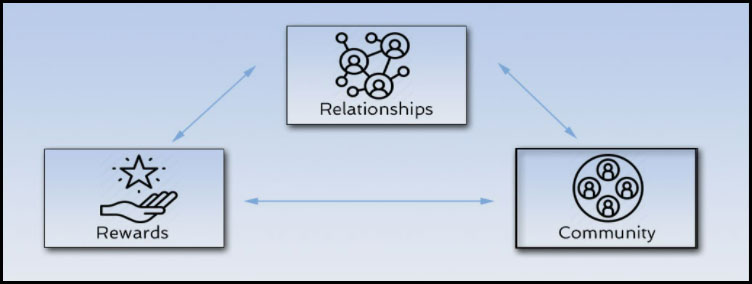
Having a calendar schedule with periodic events heightens your brand’s “experiential value” in galvanizing spurts. Here are some neat ideas to achieve this:
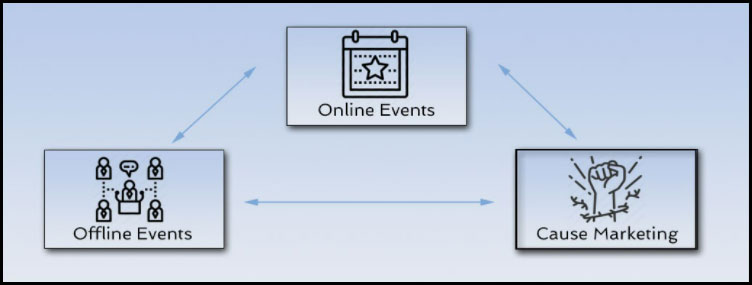
So, there we go … you’ve now got yourself a clear and practical small business marketing roadmap to know where to go from where you are.
Here’s what you can do next:
1. Bone up on the basic concepts of small business marketing (even if you feel you know it all) .. add to these the profound customer-centricity advice of the incomparable marketer Harry Gordon Selfridge …

(Image courtesy: Selfridges)
2. Get the Big Four “Need-To-Do” marketing activities in place. Use them optimally, regularly, and with total commitment. Keep monitoring their performance.
3. Experiment with any of the “Nice-To-Do” marketing activities (one at a time, on a small but sacrosanct budget, and watching performance metrics before expanding).
Remember, marketing can be fun if it’s played as a low-risk game. Work with what works for you. And while you’re at it, enjoy watching your big and small competitors run from your bite!
Delve deeper into the tangible results of my unique approach by exploring my service spectrum, my case studies, and other items in my portfolio. Each piece is a testament to the harmony of experience, an unconventional mindset, and cross-sector adeptness.
If you’re eager to elevate your brand’s narrative and strategy, don’t hesitate to tap into this wealth of knowledge.

"As a Content/Brand Specialist, and SEO/UX Writer, I can help transform your brand's online presence. I can lift it with innovative ideas to take it to an enviable position. Let's collaborate to create a captivating brand story, engage your audience, boost your online visibility, and increase your ROI. Take the next step towards your brand content success and contact me today."
Shobha Ponnappa
I Bring You:
Content Marketing That’s “Unusual By Strategy” … Tips, Tricks, Tactics, Techniques, Trends, Training.
Get my weekly ContenTracker Newsletter packed with loads of content marketing ideas – proven and unusual.
Get a free download of my ebook on “50 Unusual Ways To Use AI In Content Marketing” … and transform your success.
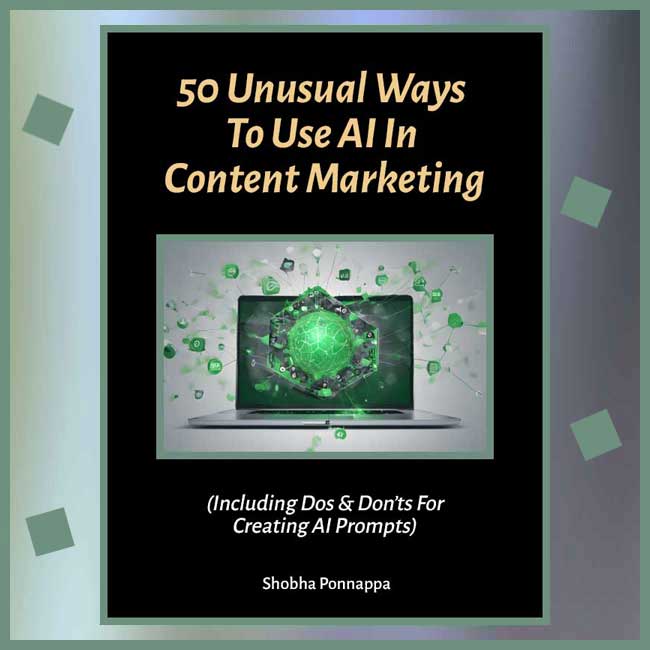
Just fill in the form to join my community … we have big and small brands for company. You’ll stay on the speedway to growth.
KEY TOPIC CATEGORIES COVERED ON THIS SITE:
COPYRIGHT © 2024. SHOBHAPONNAPPA.COM. ALL RIGHTS RESERVED.
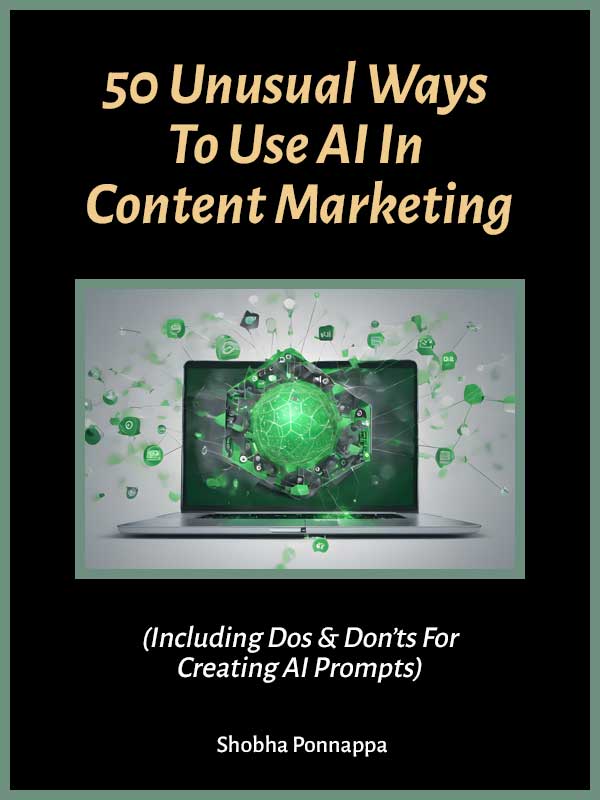
Just fill in this form and get this awesome ebook in your email inbox. Plus … each week you’ll receive my ContenTracker Newsletter that brings you tips, tricks, tactics, techniques, trends, and training on the latest in content marketing.